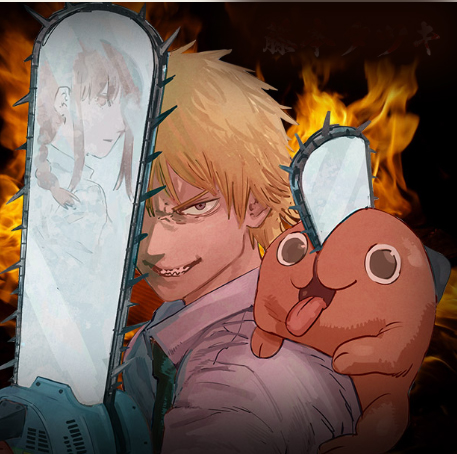# Unlocking the Secrets: Santa Claus & Dolls in Chainsaw Man Manga!
Chainsaw Man, the groundbreaking manga created by Tatsuki Fujimoto, has taken the world by storm with its unique blend of horror, humor, and heart. One of the most intriguing elements within this chaotic universe is the character of Santa Claus and her eerie dolls. In this article, we will delve into the secrets behind Santa Claus and the dolls, exploring their significance and the themes they represent. So buckle up — it’s going to be a thrilling ride!
The Enigmatic Santa Claus
Santa Claus, at first glance, seems like an oddity in the gruesome world of Chainsaw Man. However, her character is a clever juxtaposition of childhood innocence and the dark underbelly of desire and power. With a cheerful facade, she embodies the joyful spirit of giving, while subtly weaving in the grim realities of greed and manipulation. This duality makes her one of the most fascinating characters in the series, compelling readers to reflect on the complexities of human nature.
The lore surrounding Santa Claus reveals a deeper narrative about the nature of gifts and the burden that comes with them. In her twisted interpretation of the holiday spirit, the act of giving becomes a merciless game of survival. The dolls she controls serve as extensions of her will, reflecting the loss of autonomy and identity that many characters in the manga experience. This unsettling imagery encourages fans to consider how easily innocence can become corrupted in a world driven by power struggles.
Analyzing Santa Claus’s character shines a light on the intricacies of love and the lengths one might go to in its pursuit. The connection between her and the dolls embodies a perverse form of affection, revealing that love can possess both nurturing and destructive qualities. Santa Claus challenges us to question our understanding of gifts and the motives behind them, reminding us that even the most enchanting figures can possess a sinister edge.
The Dolls: Symbols of Control and Power
The dolls in Chainsaw Man are not just toys; they are chilling manifestations of control, power, and the fragility of life itself. Each doll serves as a haunting reminder of the humans they once were, now enslaved to the whims of Santa Claus. This imagery compels us to confront the reality that we often relinquish our power to external forces, whether they arise from societal expectations or personal relationships.
In this chaotic manga world, the dolls evoke profound themes of individuality and the loss of self. Santa Claus strips away their autonomy, presenting a stark portrayal of how easily people can become puppets, driven by the desires of others. This aspect resonates deeply in our day-to-day lives, as individuals sometimes stray from their true selves in pursuit of acceptance or success. The dolls serve as a cautionary tale, motivating us to reclaim our agency and resist the forces that seek to control us.
Moreover, the relationship between Santa Claus and her dolls sparks a conversation about loyalty, obligation, and the sacrifices we make for those we care about. Are we not, at times, like the dolls, sacrificing our desires for the happiness of others? This thought-provoking exploration invites readers to reflect on their own connections and the dynamics that govern them, ultimately empowering us to seek healthier and more authentic relationships in our lives.
The Horror of Desire: A Deeper Look
Chainsaw Man is renowned for its ability to blend horror with humor, and the portrayal of Santa Claus and her dolls is no exception. At the heart of this horror lies the theme of desire — a driving force that can lead to both creation and destruction. Santa Claus vividly embodies the darker side of longing, illustrating how unchecked desires can morph into something truly monstrous.
The desire for love, acceptance, and power can blind individuals, propelling them down paths filled with manipulation and cruelty. Santa Claus’s twisted interpretation of giving reveals the darker implications of desire — showcasing the lengths one is willing to go to obtain what they believe they desperately need. This haunting aspect of her character serves as a poignant reminder that desire, while a natural part of the human experience, can lead us to betray our values if left unchecked.
In this light, Chainsaw Man masterfully captures the duality of human nature, reinforcing the idea that light and dark coexist within us all. By confronting the horror of desire through Santa Claus and her dolls, readers are encouraged to embrace their desires mindfully, recognizing that the pursuit of fulfillment must be balanced with compassion and self-awareness.
The Role of Humor in Darkness
One of the unique aspects of Chainsaw Man is its remarkable ability to infuse humor into terrifying scenarios, and the characterization of Santa Claus exemplifies this perfectly. Amidst the horror, moments laced with absurdity and wit emerge, creating a dynamic contrast that keeps readers engaged and entertained. This blending of humor and darkness is a testament to Fujimoto’s storytelling prowess, highlighting the complexity of human emotions.
The absurdity of Santa Claus’s antics often brings levity to dark situations, reminding us that laughter can be an incredibly powerful coping mechanism. In the face of despair, humor allows both characters and readers to maintain hope, proving that joy can indeed flourish even in the most dire circumstances. This delicate interplay between horror and humor serves as a poignant reminder that life is not solely defined by suffering; there will always be moments of lightness amidst the chaos.
Furthermore, the humor surrounding Santa Claus challenges the typical portrayal of villains in manga. Instead of being purely malevolent, she evolves into a multifaceted character who elicits both fear and amusement. This complexity enriches our understanding of her motivations and challenges us to consider that even those who commit terrible acts may have layers worth exploring. In this way, Chainsaw Man shifts the narrative, encouraging us to find humor in darkness while fostering resilience and a sense of community among its readers.
Conclusion: Embracing the Complexity of Existence
In conclusion, the character of Santa Claus and her dolls in Chainsaw Man present a captivating exploration of human desires, power dynamics, and the intricate nature of relationships. With her duality of innocence and malice, Santa Claus challenges us to reflect on our own complexities. The dolls act as powerful symbols, urging us to confront the external forces that seek to control us.
As we navigate through life’s twists and turns, let us embrace the multifaceted nature of our existence. Remember, it’s okay to acknowledge the darkness within us as long as we strive for balance and understanding. So, go out into the world with open hearts and minds, reclaim your agency, and seek authentic connections. You are the master of your own story, and every day is a new opportunity to write a chapter filled with light, love, and laughter. Keep pushing forward, and never forget that you have the power to shape your own destiny!

